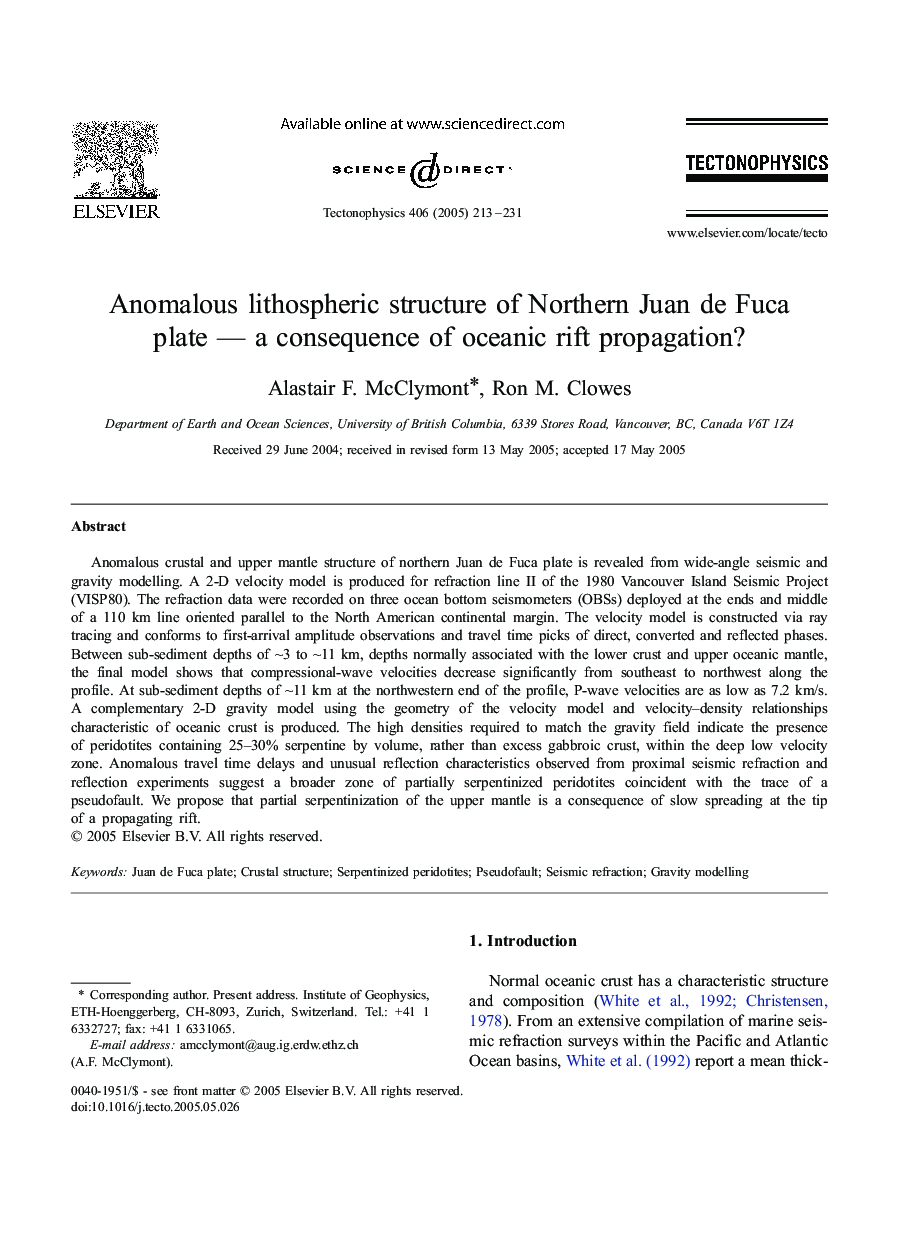| Article ID | Journal | Published Year | Pages | File Type |
|---|---|---|---|---|
| 9526944 | Tectonophysics | 2005 | 19 Pages |
Abstract
Anomalous crustal and upper mantle structure of northern Juan de Fuca plate is revealed from wide-angle seismic and gravity modelling. A 2-D velocity model is produced for refraction line II of the 1980 Vancouver Island Seismic Project (VISP80). The refraction data were recorded on three ocean bottom seismometers (OBSs) deployed at the ends and middle of a 110 km line oriented parallel to the North American continental margin. The velocity model is constructed via ray tracing and conforms to first-arrival amplitude observations and travel time picks of direct, converted and reflected phases. Between sub-sediment depths of â¼3 to â¼11 km, depths normally associated with the lower crust and upper oceanic mantle, the final model shows that compressional-wave velocities decrease significantly from southeast to northwest along the profile. At sub-sediment depths of â¼11 km at the northwestern end of the profile, P-wave velocities are as low as 7.2 km/s. A complementary 2-D gravity model using the geometry of the velocity model and velocity-density relationships characteristic of oceanic crust is produced. The high densities required to match the gravity field indicate the presence of peridotites containing 25-30% serpentine by volume, rather than excess gabbroic crust, within the deep low velocity zone. Anomalous travel time delays and unusual reflection characteristics observed from proximal seismic refraction and reflection experiments suggest a broader zone of partially serpentinized peridotites coincident with the trace of a pseudofault. We propose that partial serpentinization of the upper mantle is a consequence of slow spreading at the tip of a propagating rift.
Related Topics
Physical Sciences and Engineering
Earth and Planetary Sciences
Earth-Surface Processes
Authors
Alastair F. McClymont, Ron M. Clowes,
